Technology Is Not An End But Means To Make Customer Life Easier: Manu Saale
- By 0
- February 04, 2020
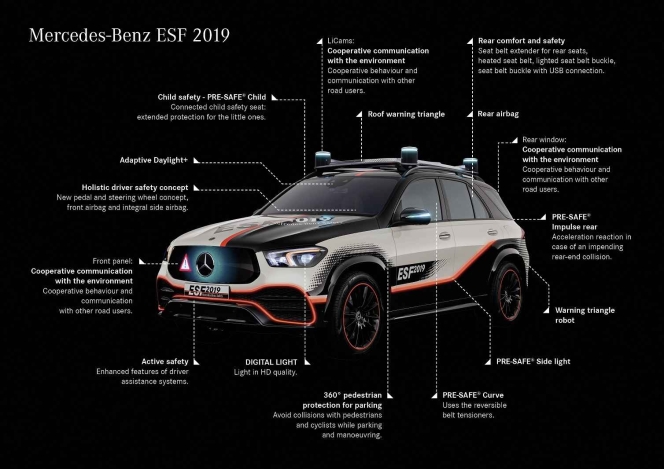
Mercedes-Benz R&D India (MBRDI), founded in 1996 in Bengaluru to support Daimler’s research, IT and product development activities, is now one of the largest global R&D centres outside Germany, employing close to 5000 skilled engineers and a valuable centre to all business units and brands of Daimler worldwide. The centre is also a key entity for Daimler’s future mobility solutions through C.A.S.E (Connected, Autonomous, Shared and Electric) for building autonomous and electric vehicles. The centre’s competencies in engineering and IT have progressed to using AI, AR, Big Data Analytics and other modern technologies to provide seamless connectivity. During an interaction with T Murrali, the Managing Director and CEO of MBRDI, Manu Saale, said, “The centre has been growing phenomenally. We have just started a team on cyber security. . . We have been helping to simulate some stack- related solutions using fuel cells. I’m waiting for a clear strategy from the company for a possible venture into the hydrogen path.” Edited excerpts:
Q: You could begin with detailing the contribution of MBRDI to the Experimental Safety Vehicle (ESF)?
Saale: The ESF is a concept vehicle. We have taken a GLE platform and tried to predict technologies that are coming up and put its demo version inside. Some of them are just future technologies but they are strictly based on the data we have collected, and the accident research and digital trends that we have seen.
There is a worldwide safety theme, centred in Germany and India, which is studying all these data and statistics to predict how the future should look like. Mercedes-Benz has a history of building concept cars as mobility is changing around us. This time we have decided to put safety in perspective for the new age mobility with ESF2019. This time we have decided to put safety in perspective for the new age mobility.
For example, in a driverless car there is no steering wheel, so where will you put the air bags as it has been placed in the steering wheel. This means that the airbag concept will have to change. If you go white-boarding on this topic you will realise that some fundamental things you have been counting on all these years will change. This international team in Bengaluru supporting Germany has been working on many of these kind of concepts.
We have brought it here for two reasons. One is for the contribution from India. A lot of digital simulations have been done before implementing the hardware. Bengaluru has contributed to the digital evaluation of the new safety concepts in ESF. The other reason is to inspire the engineers to innovate further based on the first level of fantasies that we have created, and how it could be taken to the next level. These are the kind of things we want our engineers to think about; ESF is a pointer in that direction.
Q: What are the possible changes with the emergence of EVs and autonomous vehicles for safety?
Saale: Imagine not being able to predict the position of passengers when a crash happens. If they are sitting in a conference mode, facing one another other, how can they be protected without an airbag in their front? That’s one; second is the use of different materials within the car and the dynamics that could happen in an accident. Third is connection to the source of a fuel tank / pack, not specific to one place but probably spread across the floor of a car. The battery and its chemical components are also critical in a crash situation.
There are many new things when we think about safety in autonomous and electric vehicles; whereas connectivity plays into our hands. I don’t think the industry has exhaustively thought about what new dimensions can come from driving autonomous vehicles.
Q: What happens if the accident is so severe that all the electrical connections are cut off? Has any thought gone into this?
Saale: I am sure they have thought about it. An airbag can pop up in milliseconds; an SOS is message placed post crash. Today, in an instant, we can ping the world somehow, so information of position, latitude, etc is sent out immediately when an accident takes place. Of course it depends a lot on the emergency services and collision response in the country.
Q: What is the role played by MBRDI in the development of Artificial Intelligence (AI) and Augmented Reality (AR)?
Saale: This is the new age digital; we don’t have to go back to the old world of software alone. Digital has shown new potential in the last few years and we have tried to keep pace with the current trends. AI is certainly one of the buzz words that is coming up.
MBUX, which we flagged off in Bengaluru a few weeks ago, showcases how AI could be used as a technology to make customer life easier in the car. We look at all the use cases to find out what the customer does in a car.
For example, use of camera in a car. During night driving if the driver extends his hand to the vacant seat next to him looking for something, and if it is dark, the camera will sense that he is seeking something and switch on the lights. We need AI for that because we have to understand the hand position and the amount of stretch done; it should not be confused with the driver stretching himself after yawning. Such a simple use case requires a lot of technology. These are things where people look at customer behaviour and say ‘technology is not for the sake of technology but to make customer life easier.’

Q: The Tier-1 companies spread across Germany have come up with many futuristic solutions for vehicles. They have their own research centres. So what is the role of R&D centres of OEMs like this other than integration?
Saale: Every centre has to ride its own destiny. Even if we are a GIC we cannot expect HQ to hold our hand for ever. It’s a typical parent-child relationship and not a customer-supplier one. We have seen all the combinations of GICs working out there in the market. I think we have a good success story here. That is the value-add GIC has to think about.
A survey was done on the value-add from GICs; they used the word entrepreneurship from GICs. It was found that only 6 percent of GICs were entrepreneurial, that were really able to innovate. We were also named in that top 6 percent. It depends on the company culture, relationships, handling discussions with HQ and the local leadership teams. That’s the challenge in a GIC compared to a profit centre that is looking from one customer to another.
Q: You are also in touch with suppliers in India and across the globe for necessary hand-holding?
Saale: Absolutely, imagine a situation where the parents trust the child completely.
Q: You will be the parent and Tier-1s the children?
Saale: No, it is not that way. We behave as Daimler when we talk to Tier-1s. We tell them that ‘you know the car well, so do it by yourself and deliver the product.’ That’s the level of maturity in interaction that one can reach.
Q: When it comes to electronics, OEMs the world over are faced with many regulations. Do you see options for them to comply with all the regulations considering the amount of electronics coming into the car?
Saale: Every new thing is a technical challenge on the table. It can be stricter emission norms or features and functionalities that are difficult to reach, a technical compliance issue that crops up every now and then, and a safety or parking aspect that is covered by many regulations around the world. We thrive on such challenges that have pushed a company like Mercedes to keep on inventing because, among many other things, hardware is getting cheaper and smaller, software capabilities are growing, connectivity is increasing, computing external to the car is possible, and so many other things. OEMs are dealing with authorities, trying to handle what is possible at lower cost, because at the end of the day we have to sell. I am sure that regulators and societies around the world today are looking for some balance between technology and cost.
Q: How do you manage multiple sensors in the vehicle?
Saale: Digital appears to be very complex now but electronics will go through its life cycle and come to a point where man understands its complexity and is able to put it all together. Today, we are talking about sensor fusion - putting together the net of information and seeing it as a whole through various sensors.
Functionalities could range from a switch to radar or lidar with their spectrum of signals, to give various resolutions; the processing capability would be in milliseconds. The more we comprehend the mixed bag of signals we get the better will be our ability to make right decisions.
Q: With all the facilities that you provide to the driver, are you not actually deskilling him?
Saale: The trend is that people don’t want to get into the hassles of driving a vehicle. Driving is stressful and cumbersome to many which is why the autonomous car would gain popularity. The driver has to just punch in where he/she has to go and the vehicle will do it automatically, saving both mental and physical tension. A completely new user base is being introduced into mobility with software features. We have to look at it positively.
Q: Are you also working on cyber security, on things that get into the car?
Saale: We have just started a team now. Our focus on cyber security is at a centre in Tel Avi, Israel.
Q: Do you see scope to improve the thermal efficiency of Internal Combustion (IC) engines further?
Saale: I think the capability, from an engineering perspective, exists to take the IC engine to the next level. The potential continues to be there and all OEMs talk about it. Possibly it is getting affected by the social and environmental aspects.
Q: It is said that the exhaust from a Euro-6 engine is far better than the atmospheric air in many highly polluted cities and it is not actually polluting. What is your opinion?
Saale: It is true. But people say if electricity is generated from coal then aren’t we contributing to pollution? If we localise electric production to one area with everything contained then it would give us better scope to control it rather than spewing it out of every vehicle tail-pipe in all over the world.
Imagine millions of polluting vehicles moving around compared to millions of electric, which don’t have any tail-pipe emissions, with electricity generated by coal that is centralised; it would be a completely different technical and logistic challenge from the environmental point of view. Regulators, politicians and policy makers are all giving their views on this issue; the improvement in living standards and the coming up of smart cities would affect it. I think we are moving in the right direction with the greening of the environment covering everything. I see this sustainable city living much better pictured with electric moving around me.
Q: Can you tell us about the work done around IoT?
Saale: We are working on digitalisation of our production in many ways. One of the teams for Manufacturing Engineering in Bengaluru focuses on digital methods in manufacturing such as production planning, supply chain, logistics and IoT. The team also works on front-loading of production planning.
Q: What is your contribution to the Sprinter F-CELL, the fuel cell application, that replaced the diesel engine?
Saale: We have been helping to simulate some stack- related solutions using fuel cells. I’m waiting for a clear strategy from the company for a possible venture into the hydrogen path. (MT)
Omega Seiki Mobility Launches Autonomous Electric Cargo Three-Wheeler
- By MT Bureau
- December 01, 2025
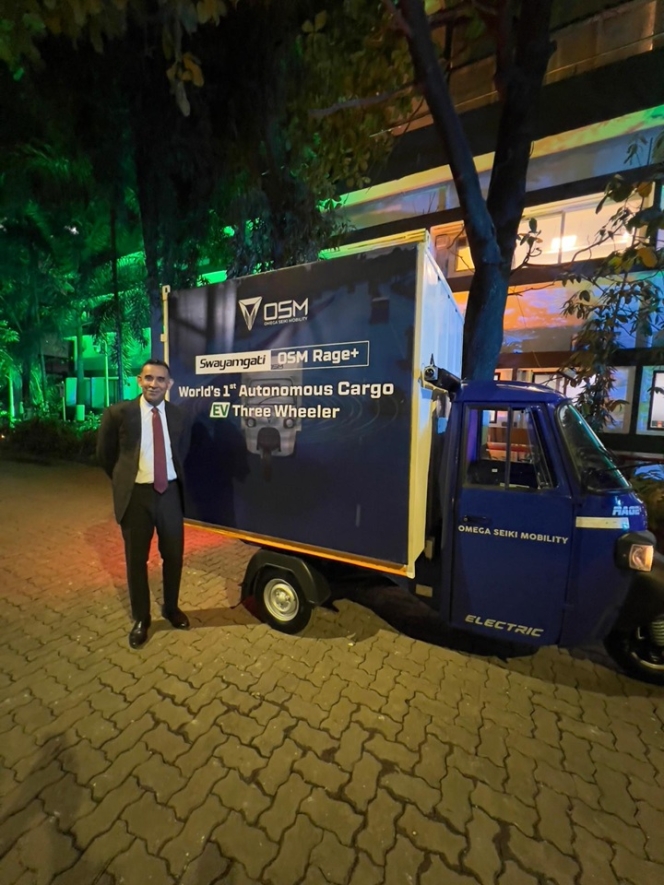
Delhi-NCR-headquartered electric vehicle maker Omega Seiki Mobility (OSM) has launched Swayamgati Cargo, which it claims is India’s first autonomous electric cargo three-wheeler.
Priced at an introductory INR 415,000, the EV brings self-driving technology to the logistics and industrial mobility sector, making autonomous operations accessible and scalable for Indian enterprises.
Swayamgati Cargo is based on the Swayamgati passenger autonomy platform and is purpose-built for campus logistics, industrial parks, airports, SEZs, manufacturing hubs, gated facilities, e-commerce fulfillment centres and smart cities. Bookings for Swayamgati Cargo open today, with deliveries beginning this quarter.
The new vehicle integrates OSM’s EV drivetrain with an AI-driven autonomy stack featuring Lidar, GPS, multi-sensor navigation, AI-based obstacle detection (up to 6 metres), geofenced route mapping and remote fleet management controls. The vehicle requires pre-mapped routes, customisable for each client’s operational environment.
With a payload capacity optimised for intra-campus logistics and a driving range of up to 120 km, the vehicle is designed to streamline repetitive cargo movement, reduce manual labour dependency and enhance operational efficiency in controlled zones. OSM aims to deploy 1,500 autonomous cargo and passenger units within the next 24 months.
Global industry estimates suggest autonomous logistics and low-speed autonomous mobility are expected to be among the fastest-growing segments in the USD 620 billion autonomous vehicle market projected for 2030.
Dr. Uday Narang, Founder & Chairman, Omega Seiki Mobility, said, “After the successful launch of Swayamgati for passenger applications, Swayamgati Cargo is our next major step toward building India’s autonomous mobility ecosystem. Industrial parks, manufacturing hubs, and logistics facilities today demand precision, efficiency, and 24/7 reliability. Autonomous cargo EVs are the future of structured logistics. With this launch, we are proving once again that advanced autonomy can be designed, engineered, and produced in India – at a cost that makes sense for businesses across the country.”
Vivek Dhawan, Chief Strategy Officer, Omega Seiki Mobility, said, “Swayamgati Cargo brings intelligent logistics to the ground level. From material handling to last-mile campus transport, this vehicle eliminates human error, cuts operating costs, and ensures predictable movement. Our vision is clear: to democratize autonomy for India’s industries. With strong demand coming from airports, factories, and tech campuses, we see Swayamgati Cargo becoming a critical part of India’s smart logistics infrastructure.”
The cargo variant is built on the same autonomy platform that recently completed a successful Phase 1 pilot on a 3 km route with multiple stops, real-time obstacle detection and seamless autonomous navigation. The cargo-focused configuration now begins deployment for structured logistics environments under Phase 2 commercial rollout.
Swayamgati Cargo is engineered specifically for India’s dynamic, high-density industrial and commercial traffic patterns. Its structure, intelligent navigation, and zero-emission drivetrain make it an ideal solution for industrial material movement, airport baggage and cargo handling, intra-campus goods distribution, warehousing and factory-to-factory transfer, e-commerce fulfillment centre mobility, and gated community and tech park logistics.
At present, Omega Seiki Mobility has two manufacturing facility in Faridabad and one in Chakan (Pune). The company’s international assembly plant in Dubai (Jafza) caters to markets across Asia and Africa. A nationwide network of over 200 dealerships and service centres ensures maintenance, spares availability and operational support.
Exponent Energy Opens First Sales Point In Bengaluru
- By MT Bureau
- December 01, 2025
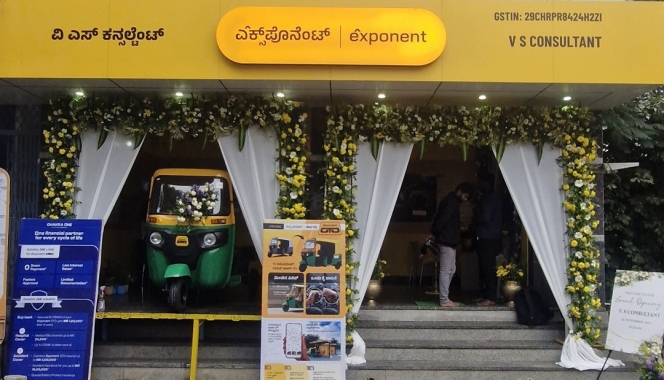
Exponent Energy, an energy-tech company based in Bengaluru, has opened its first Exponent Sales Point (ESP) Store in Laggere, Bengaluru. The outlet will showcase the full range of Exponent-enabled three-wheelers and serve as a destination for customers. The store will also operate as a retrofit touchpoint for converting existing CNG/LPG passenger three-wheelers into electric vehicles.
The store creates direct access for auto drivers to explore Exponent-enabled vehicles, experience 15-minute rapid charging, understand the retrofit process and take test drives. Drivers can drop off their CNG or LPG autos and pick up their EV retrofits within 24 hours. Exponent plans to add over 15 touchpoints across Bengaluru by the end of FY2026.
Exponent has launched 5 three-wheelers in partnership with OEMs such as Montra Electric (the Murugappa Group) and Kinetic Green. The store brings all Exponent-enabled models under one roof, allowing customers to explore and purchase with financing options and documentation. Every vehicle comes with a five-year warranty or 3,000 charging cycles. With zero to 100 percent 15-minute rapid charging and access to Exponent’s 70-plus charging points across Bengaluru, the company aims to make the shift to electric practical.
Ayush Bhargava, Head of Business, Exponent Energy, said, “Our first ESP store gives drivers a firsthand experience of the full Exponent ecosystem, from exploring our range of Exponent-enabled vehicles to seeing how existing vehicles can be upgraded. This is a buying experience auto drivers have never had before, combining clarity, choice and convenience under one roof. With this store, we are setting the foundation for a faster, more accessible EV transition and plan to replicate this model across more cities soon. When drivers see how easily they can switch to EVs at lower running costs, the shift becomes inevitable.”
In November 2025, Exponent Energy entered the EV retrofit business with its newly launched retrofit technology, Exponent Oto, capable of converting any CNG or LPG auto into an electric vehicle in just 24 hours. With zero down payment, flexible EMIs and an assured buyback after three years, Exponent makes the transition to electric simple. Exponent Oto allows drivers to save up to INR 5,000 every month, even after accounting for charging and EMI costs.
Exponent was co-founded in 2020 by ex-Ather executives Arun Vinayak and Sanjay Byalal. The company worked on its battery pack (e^pack), charging station (e^pump), and charging connector (e^plug) that together unlock a 15-minute rapid charge and give 3,000 cycle life warranty for EVs – all done on a range of lithium-ion cells.
The company has over 2,500 EVs powered by Exponent tech on the roads of India, 150-plus charging stations, over 1 million rapid charging sessions completed and over 50 million kilometres covered. The company has expanded to four new cities within two years.
Hyundai Motor Group Tops Out Future Mobility Battery Campus In Korea
- By MT Bureau
- December 01, 2025

South Korean automotive major Hyundai Motor Group held a topping-out ceremony for its Future Mobility Battery Campus in Anseong, Korea, marking a step in advancing battery technology and enhancing global electric vehicle competitiveness.
The event marked the construction progress since breaking ground in January 2025 and reaffirmed the Group’s vision to lead future mobility through next-generation battery research and development infrastructure. The campus represents a KRW 1.2 trillion investment, spanning approximately 197,000 square metre. The site is expected to be completed by end-2026.
Heui Won Yang, President and Head of the R&D Division at Hyundai Motor Group, said, “Through the Future Mobility Battery Campus, we aim to seamlessly connect the entire battery ecosystem to foster cross-industry collaboration and accelerate technological advancement. We are committed to strengthening Hyundai Motor Group’s EV battery competitiveness and advancing global electrification through strategic collaborations.”
The Future Mobility Battery Campus will serve as the Group’s first comprehensive battery research and development hub, enabling Hyundai Motor Group to internalise battery capabilities, including cell design, process engineering and integrated control systems linked to EV battery management.
While existing centres focus on initial cell and process design and validation at the unit level, the new campus will conduct continuous process validation. This approach ensures consistent quality and reliability under conditions that consider real-world vehicle application.
The key focus areas include:
- High-Precision Validation: This includes battery cell production process replication, an integrated testbed for iterative validation and battery lifecycle testing.
- Next-Generation Battery Development: Initially focusing on high-performance lithium-ion cells for EVs and Extended Range Electric Vehicles (EREVs), the scope will expand to diverse formats and materials and adaptability for future mobility.
- Digital and AI Integration: This involves AI-based tools and automated testing for predictive modelling and automation, along with big-data analytics to improve reliability and performance.
Hyundai Motor Group aims to build stronger partnerships with battery manufacturers and drive shared growth across the battery value chain. The campus will provide infrastructure and data-driven insights that enable faster technology commercialisation and validation processes.
Beyond EVs, the Future Mobility Battery Campus will enhance readiness for robotics, Advanced Air Mobility (AAM) and other future mobility sectors.
During the ceremony, the Group signed an MoU with Gyeonggi Province, Anseong City, and Gyeonggi Housing and Urban Development Corporation to foster a battery industry ecosystem and attract related businesses. This partnership underscores the Group’s commitment to creating an industrial cluster that supports technological advancement and sustainable economic development.
Pioneer to Showcase Solutions For SDVs And Two-Wheelers At CES 2026
- By MT Bureau
- November 28, 2025
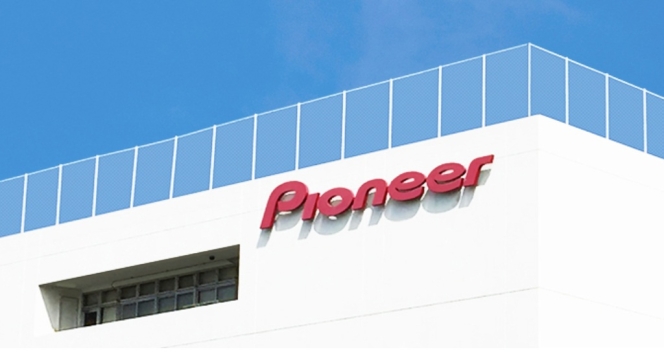
Japanese technology company Pioneer Corporation has announced it will attend CES 2026 in Las Vegas from 6-9 January 2026. The company plans to showcase its recent accomplishments in devices and solutions for software-defined vehicles (SDVs) and motorcycles.
These solutions leverage Pioneer's expertise in in-vehicle acoustic environments, human-machine interface (HMI) and connectivity technologies.
The presentation will cover several areas:
- Integrated Sound Platform: This platform is scalable, allowing diverse automakers to install Pioneer's or other vendors’ sound solutions tailored to their models. The software-enabled hardware design allows for lighter parts and components, contributing to lighter vehicles and improved fuel economy, while optimising costs. Visitors can experience three types of sound systems (entry-level, premium, and luxury) in a demo vehicle.
- Spatial Audio System: An advanced audio system, adaptable to vehicles including older models, provides drivers and passengers with a high-quality spatial audio experience. This innovation is the culmination of Pioneer’s expertise in in-vehicle acoustics, coupled with technologies. Visitors will experience multi-channel spatial audio and a sense of presence in a demo vehicle.
- Entry-level Cockpit Domain Controller (CDC): A newly developed CDC is designed for budget-friendly vehicles, offering a cost-effective alternative for flexible display and control design. This CDC shares fundamental design with Pioneer’s existing IVI software without employing a hypervisor, enabling entry-level vehicles to benefit from cockpits.
- AI-enabled Camera Solutions: Next-generation automotive-grade AI-enabled camera platforms elevate driver safety by enhancing visibility and eliminating blind-spots and also deliver personalised driving experiences. Pioneer will showcase a demo vehicle equipped with ten AI-enabled cameras, designed for factory-installation by automakers, providing the driver with 360-degree surround view during driving, parking, and poor weather scenarios. The company will also showcase its drive recorder portfolio, which encompasses a connected smart camera featuring real-time driver monitoring, alerts and driving diagnostics, as well as digital mirrors, modular dashcams and other accessories available for factory installation and as add-ons to enterprise fleets.
- Connected Solutions for Motorcycles: Software-defined solutions for motorcycles will be unveiled, encompassing meter clusters, onboard camera devices, and other connected solutions. Live demonstrations will showcase services made possible by Pioneer Ride Connect, which integrates Bluetooth Low Energy (BLE) between smartphones and onboard devices, AI technology for enhancing the safety and entertainment of motorcyclists and unique HMIs that facilitate an intuitive user experience.



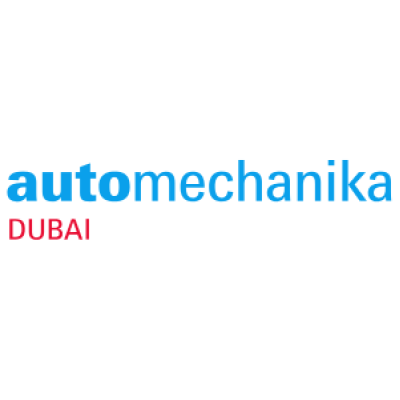


Comments (0)
ADD COMMENT